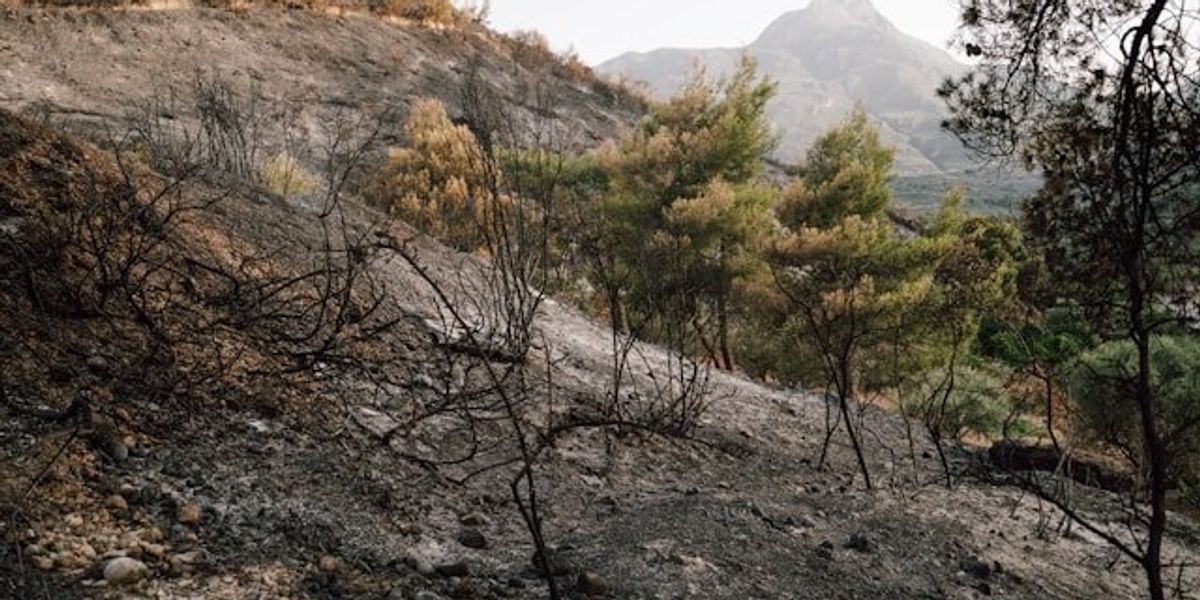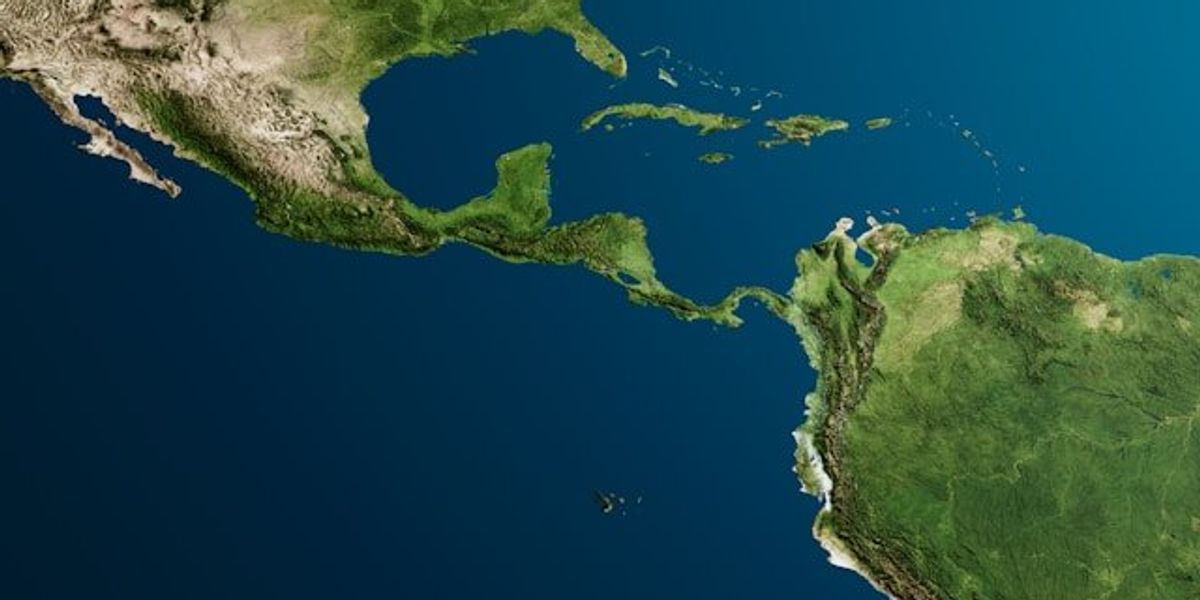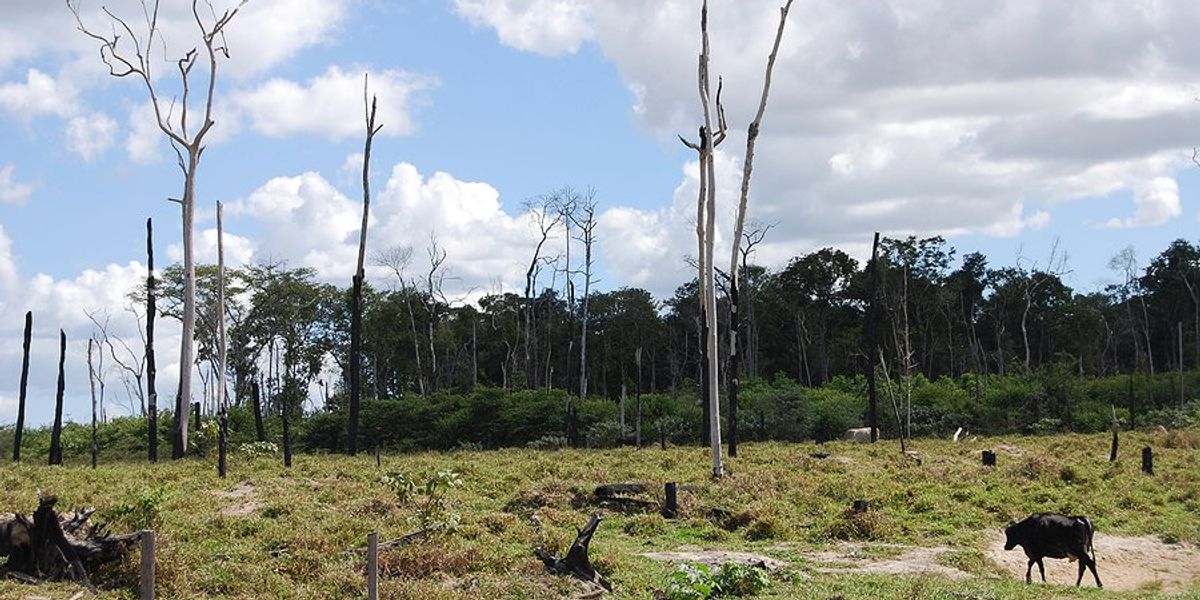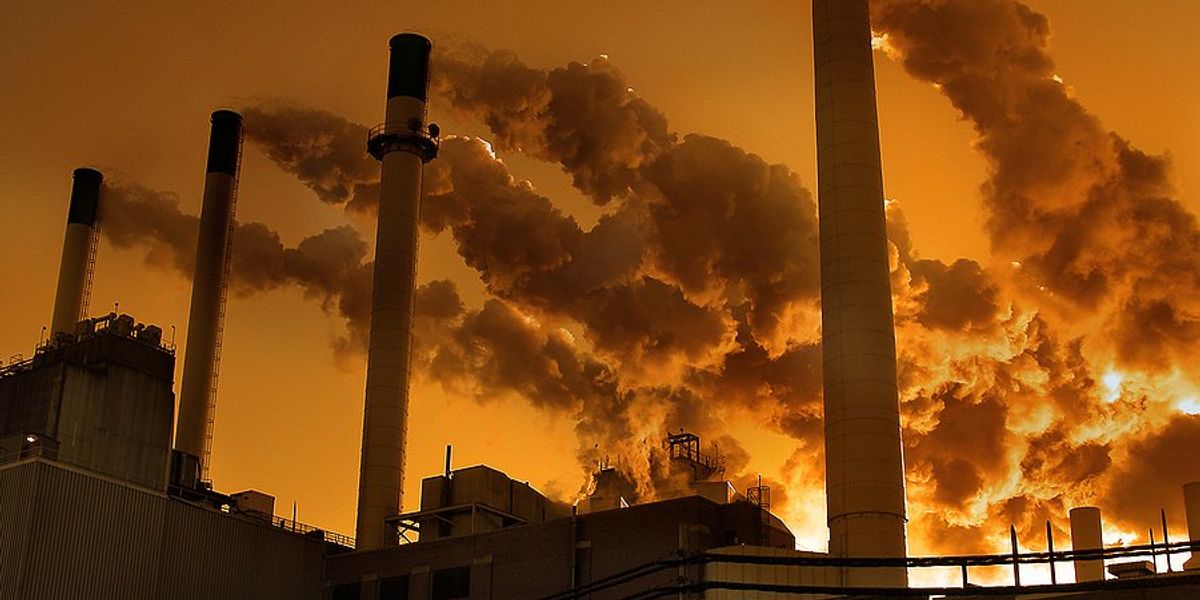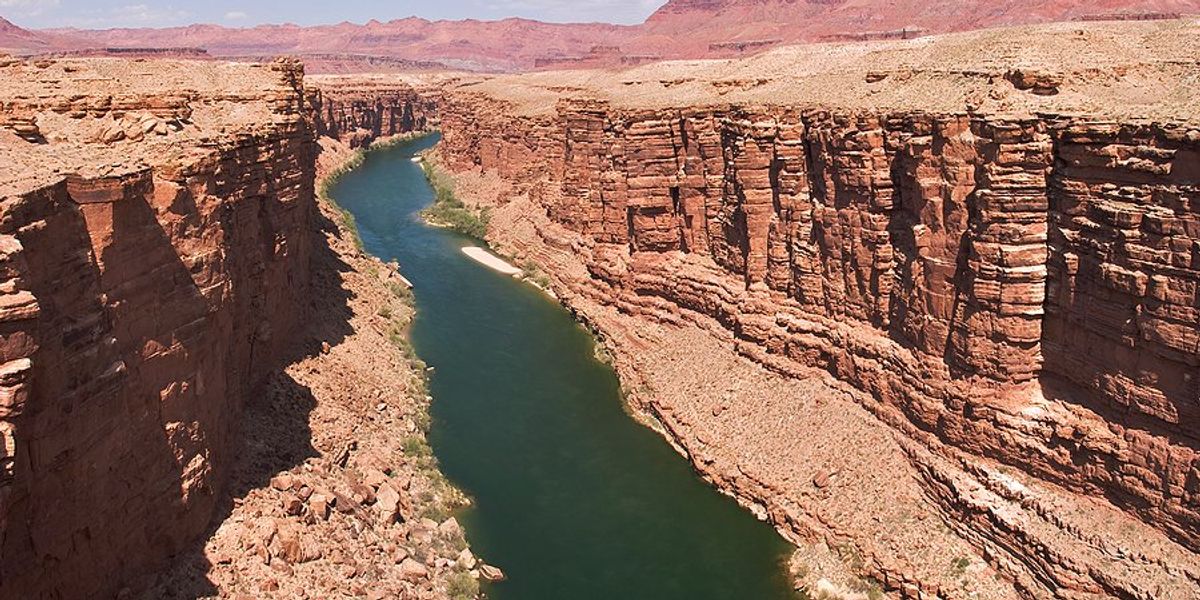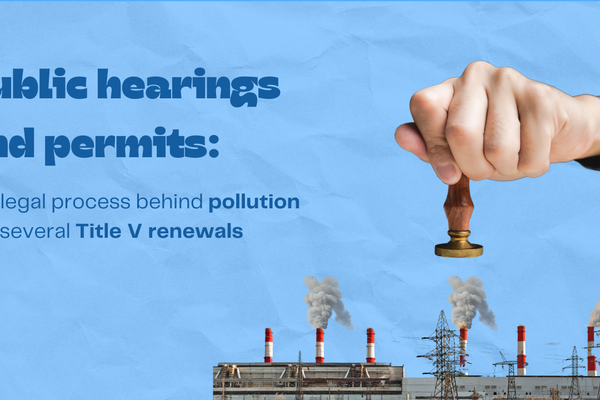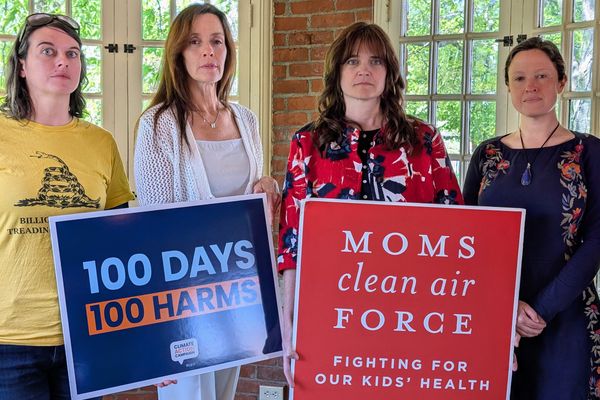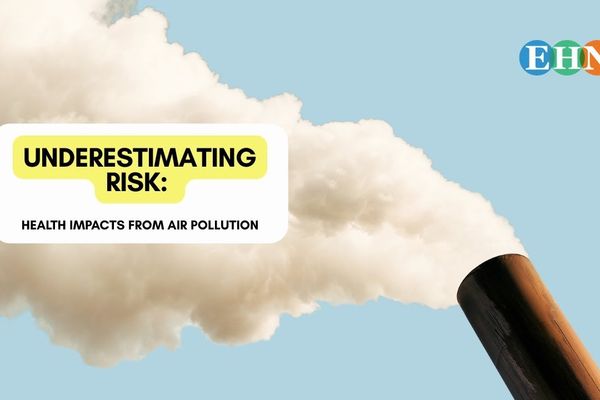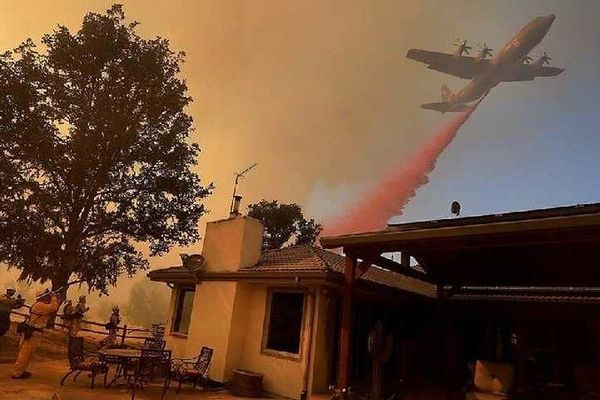In California, salt taints soil, threatening food security.
Salty soil in California’s Central Valley spurs sacrifice zones, solutions and, in some cases, solar panels.
In much of California's flat, sunny San Joaquin Valley, canals deliver the irrigation water that has made the state an agricultural powerhouse, supplying one-third of vegetables and two-thirds of fruit and nuts eaten in the United States. But along the west side of the valley, some fields are sprouting not crops, but solar panels.
The water that made this agricultural land productive also spelled its doom. Because most water contains salt, irrigating adds salt to soil over time, especially in arid and semi-arid places with little rainfall and poor drainage.
“Anytime you use water, you leave salt behind," said Jeanne Chilcott, environmental program manager for the Central Valley Regional Water Quality Control Board. “The salt moves where the water goes."
An agency that allocates water to farmers in Fresno and Kings counties in central California, Westlands Water District, has retired 88,000 acres because the soil is now too saline to grow food. The district is buying the tainted land from farmers, reallocating their water rights to other growers, and then selling the land for other purposes such as solar farms. “We have about a dozen solar projects that are somewhere in the works," said Gayle Holman, public affairs representative for Westlands.
"Anytime you use water, you leave salt behind. The salt moves where the water goes."-Jeanne Chilcott, Central Valley Regional Water Quality Control Board Farm fields turned to other uses are a threat to food security in a time when the human population is booming. The U.N. Food and Agriculture Organization estimates that we need to increase food production by 70 percent to feed the projected 9.1 billion people the world is expected to hold in 2050. But salt isn't a new problem.
The bane of agriculture dating back to when the practice first emerged 10,000 years ago in Mesopotamia, salt ruined formerly rich alluvial land between the Tigris and Euphrates rivers in modern-day Syria and Iraq. Today some of that land is still unusable, said Steve Grattan, a soil scientist at U.C. Davis.
Soil salinization is complicated, though. Where it happens and how severely depends upon the soil itself, the irrigation water quality, and underground geology and hydrology.
Solutions, likewise, are complicated and case specific. Fixes include flushing the soil with cleaner water, installing drains underground to collect salt for deposit in a central location, planting more salt-tolerant crops – or in some cases, abandoning the land for other uses, such as Westlands' solar farms.
Salt worldwide
Globally about 62 million hectares of cropland, an area the size of France, have been spoiled by salt, up from 45 million hectares in the early 1990s, according to a 2014 study by U.N. University's Canadian-based Institute for Water, Environment and Health. That's about 20 percent of the world's irrigated lands.
Each week, the world loses an area larger than Manhattan to salt degradation, adding up to more than $27 billion lost in crop value per year.
Some of the worst affected areas include the lands around the Aral Sea in Central Asia; between the Indus and Ganges rivers in India and Pakistan; the Yellow River in China; the Euphrates River in Syria and Iraq; the Murray and Darling rivers in Australia; and California's San Joaquin Valley, the southern half of the 450-mile-long Central Valley that spans most of the length of the state.
Parts of Colorado, Utah, Montana, New Mexico, and South and North Dakota are also troubled by saline soils.
Healthy soils are the foundation of global food production, said Moujahed Achouri, director of the Land and Water Division at U.N.'s Food and Agriculture Organization, at a global soil conference in Rome in 2015. However, the level of soil degradation – estimated at 33 percent globally – is “alarming" and has the potential to threaten food security and send many people into poverty, Achouri said.
Salinity is one cause of soil degradation, along with erosion, compaction, acidification, chemical pollution, and nutrient depletion.
Because of the importance of agriculture in California's San Joaquin Valley, addressing its salt problem is a top priority for state agriculture agencies. According to the U.N. study, worldwide, the agriculture industry loses $27.3 billion annually due to saline soils.
Sacrificing the Salton
The Central Valley, of which the San Joaquin Valley is the southern half, was once a vast inland sea, which means its sediment is rich – but also somewhat salty. Early farmers, starting in the 1880s, rinsed salt from the soil by flooding it with irrigation water, moving the salt away from plants' root zones so crops could grow, said Don Suarez, lab director of the U.S. Department of Agriculture Salinity Laboratory in Riverside, Calif.
The process, called leaching, has improved the soil of Terranova Ranch, located southwest of Fresno, Calif., in the San Joaquin Valley. Today the soil is less salty than when general manager Don Cameron started working there in 1981. “It's turned into productive farmland," he said. But, he cautioned, that only works when the water you use is low in salt. “The water quality is going to determine the salt in the soil."
Unfortunately, some soil in the Central Valley, especially on the western side, sits atop a shallow layer of clay that is impermeable to water. So if growers try to cleanse salt from soil, the water will collect atop the clay and rise up toward the surface, drowning the roots and surrounding them with salty water, killing the plants.
Farmers faced with this dilemma basically have one option, and it's expensive, requires regional coordination and infrastructure, and has an abysmal track record. It involves installing drains underground, atop the clay, that funnel water to pipes that carry it elsewhere, Grattan said.
The first time California growers tried this approach, the Salton Sea was chosen as a sacrifice zone. Not a sea at all but a geologic depression, the Salton Sea was accidentally filled with Colorado River water in the early 20th century. In 1928, Congress designated it as a depository for agricultural runoff from neighboring Imperial Valley farmers who use drains above clay to evacuate their salty water.
As water evaporates from the closed basin, the Salton Sea gets more and more salty, Grattan said, and nitrates, pesticides, and naturally occurring selenium are also concentrating.
These have already caused periodic fish kills and are worrisome for other wildlife, as the Salton Sea has become an important stop for migratory birds on the Pacific Flyway as other lakes and wetlands have been lost to development.
In the 1960s and '70s, Westlands Water District planned to build a series of reservoirs to collect drainage water before moving it out to San Francisco Bay. But funding ran out after building just one, Kesterson, and the water evaporated there, leaving behind salts, boron, molybdenum, and particularly selenium, Grattan said, which deformed birds.
“Developing embryos had twisted beaks," Grattan said. “Some were born without eyes." Legs and wings were also deformed, brains protruded. The horror killed the project politically, making the only option to abandon the farmland.
State plan
Yet salt in the San Joaquin Valley continues to increase, especially during drought years. That's because, during droughts, California's farms and cities rely on groundwater for up to 60 percent of their freshwater supply, up from 35 percent in non-drought years, and groundwater tends to be saltier than river water. People have been using groundwater faster than it naturally replenishes, dropping water levels deeper underground.
Pumping groundwater near the coast can leave a vacuum, sucking in increased seawater, Grattan said. Affected coastal areas include Salinas to Monterey to Oxnard to Lompoc, he said. Climate scientists predict the future will bring more frequent, intense droughts to the semi-arid state.
Also, many growers in the San Joaquin rely on imported water from the Sacramento-San Joaquin Delta, which is saltier in drought years when lower river flows don't push back ocean tides as much, Grattan said.
“More salt is coming into the valley than leaving it," said Daniel Cozad, executive director of CV-SALTS (Central Valley Salinity Alternatives for Long-term Sustainability), a collaboration of stakeholders studying possible solutions to salt and nitrate problems.
So despite the Kesterson catastrophe, the idea of moving salty water out to the ocean is getting another look. This time the state water boards are supporting a long-range study headed up by CV-SALTS. After 10 years' work, CV SALTS recently put out a report recommending building a “brine line" that would take the water to the bay, probably exiting at East Bay Municipal Utility District, a public water agency serving Alameda and Contra Costa counties.
This time, however, the water would be cleaned of uranium, vanadium, selenium, nutrients, and ammonia in a series of treatment plants along the west side of the valley. The brine would be cleaned to current environmental standards for discharge into the ocean, Cozad said, similar to effluent from a sewage treatment plant.
To protect wildlife, evaporation basins could haze birds to keep them away, while creating another attractive wetland habitat nearby with freshwater to lure them over there. Evaporation ponds would likely also be lined to prevent seepage into groundwater, where contaminants could harm drinking water supplies, said the water quality board's Chilcott.
The project plan—which the Central Valley's Regional Water Quality Control Board accepted on March 9 and began planning to implement—would require funds from local, state, and federal sources. Saline soil is everyone's problem, Cozad said.
People across the U.S. eat food from the Central Valley. And, it's not just agriculture, he added. Goods processing and other industries, wastewater treatment plants ... “all those folks have salt to manage," he said.
Some like it salty
To some extent, growers can choose crops less sensitive to salt. Terranova Ranch grows 20 to 25 conventional and organic crops. “We know the pistachios are more tolerant to salt," Cameron said. “We have some ground where water quality might be a little bit worse, so we'll tend to put salt tolerant crops on that ground."
However, farmers in the Central Valley have increasingly moved toward high-value crops like tree nuts, fruits and vegetables to get the most out of scarce water. Unfortunately, Grattan said, “It's like Murphy's Law: those crops that have the most economic value are typically the most salt sensitive. Almonds, peaches, plums … all salt sensitive."
"It's like Murphy's Law ... crops that have the most economic value are typically the most salt sensitive."-Steve Grattan, U.C. Davis To help them, Suarez's team at the USDA soil salinity lab is studying which rootstocks for popular crops like strawberries and avocados are most salt tolerant.
Grattan explained that a rootstock from one variety of plant can be grafted onto another, fusing together. “Genetically, the bottom part of the plant is a different variety than the top part," he said.
Crosses can be done with or without GMOs, said Suarez. Right now his team is not using GMOs; they are identifying genes responsible for salt tolerance and doing traditional breeding based on that information.
“Growers can benefit almost immediately by our screening process," Suarez said. “We can tell them which varieties currently available are more salt tolerant. Down the road, we'll be providing salt-tolerant lines that commercial breeders could use."
Ultimately, though, some farmland is unsalvageable. Like Westlands' retired acreage gone solar, some land is better put to other uses. Although it's lost to crop production, it can have other societal benefits like clean energy. And for a solar facility, building on land already used by humans – as opposed to wild desert habitat, avoids many conflicts with desert tortoises and San Joaquin kit foxes.
“Our goal is to keep prime farmland farming," said Westlands' Holman. “But we have had some circumstances where some land is not farmable. And that's where this becomes a good partner for that land."

